December 08, 2025
After the drought – subsidence and surface flooding risks could rise, warn Catalyst experts
The UK’s extremely dry summer could still create elevated risks for property owners well...
Leak detection is a vitally important process for safeguarding properties against water leaks. This Catalyst Services UK guide explains how they happen and how water leaks can be detected.
A water leak is an uncontrolled release of water, usually from a water pipe, water tank or other asset, such as a tap, bath, or shower.
Many millions of litres of water is lost every day in the UK due to leaks. The main cause is faulty water mains. However, huge amounts of water are lost in homes and businesses.
Plumbing accreditation body WaterSafe says a leaking toilet cistern can waste up to 400 litres of water a day – enough to fill five baths and more than double a family water bill.
Water company Severn Trent believes up to 8 per cent of toilets – most of them dual flush ones – are leaking at any one time.
This cause of leaks alone adds up to 400 million litres of water lost a day, enough to supply the populations of Edinburgh, Bristol, Manchester, Sheffield, Cardiff, Liverpool and Belfast combined!
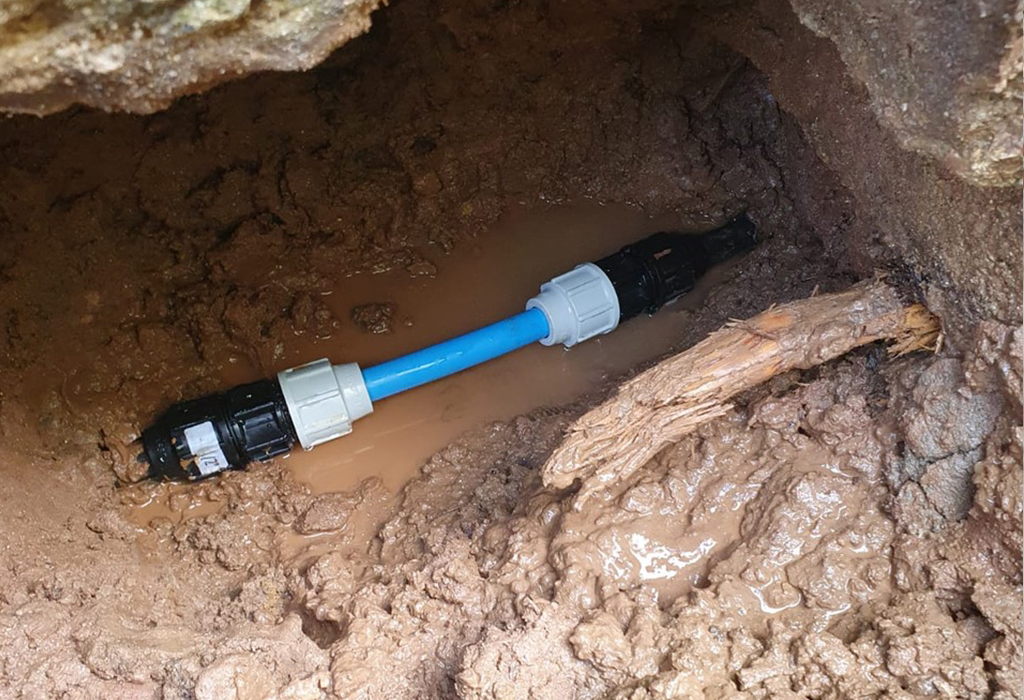
An internal water leak is one that occurs inside a property. As such, it may be caused by a faulty water pipe (but not a water supply pipe) or another water-related asset, such as a tap, kitchen appliance, bath, shower or water tank.
An external water leak is one that occurs in water pipes and related assets outside the property. For example, there could be a leak in the water supply pipe that runs from the stopcock, usually located on the boundary of a property.
Or an external leak could occur in the water communication pipe taking water from the water main to the water supply pipe. Finally, an external water leak could occur in the water main itself.
There are many different ways internal water leaks can be caused. They include:
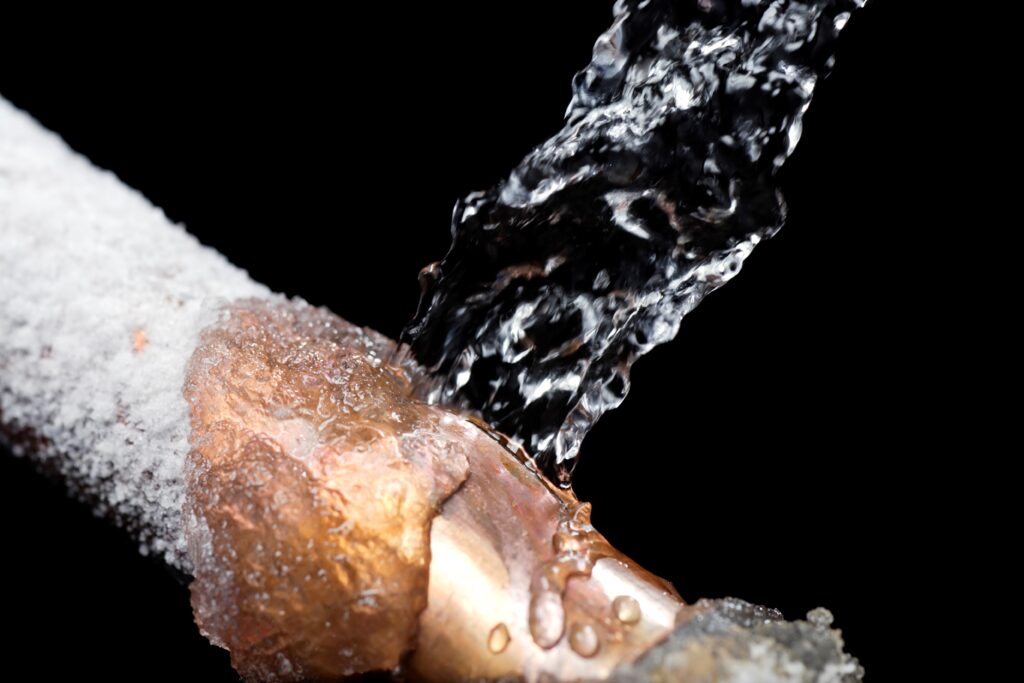
Over the years, external water pipes have been made from a range of materials, most notably copper, cast iron, steel and, most recently, plastic – namely medium density polyethylene or MDPE, which is usually light blue in colour.

Water supply pipe leaks can be highly damaging for a number of different reasons.
Major water leak flooding
If there is a catastrophic release of water in the home due to the sudden failure of a water pipe, many hundreds, if not thousands, of gallons of water can escape very quickly, flooding the property.
If the water leak is caused by a defective pipe or tank in the loft, the whole house can be flooded.
Hidden water leak damage
Water leaks can also occur over longer periods – days, weeks or month – with water seeping into building substrates. This can result in hidden damage to walls, floors and ceilings.
Damage may not be immediately apparent but can still be substantial. For example wooden floorboards, joists and lathe can be affected by rot.
After being soaked in water for a long period, plaster and brick mortar can be loosened and severely weakened. Walls, floors and ceilings can be badly affected by mould growth.
Over time, these hidden leaks can cause major cracking in walls and ceilings and severe damage to floors.
Structural damage and subsidence
Water leaks can also undermine and weaken whole structures by washing away material within and around foundations. Soils saturated by water from leaks can be weakened. As a result, foundations may give way and subside.
Water leaks can be a significant health hazard. This is because water can cause damp conditions and moisture build up in homes, which can increase the risk of respiratory, skin and eye disease.
Damp walls and ceilings can trigger mould growth. Mould spores can also contribute to infections and trigger other illnesses.
A study published in BMJ Journals concluded that the risk of asthma, allergic rhinitis, and atopic dermatitis was higher in homes that had visible mould, damp stains or water damage. Of the respiratory infections, the risk of common colds was most clearly increased.
As reported in an article by Catalyst Managing Director Brad Jackson, housing landlords are increasingly concerned as a results of high-profile cases where asthma and chest infections related to damp and mould in homes have been linked with the deaths of vulnerable people, including children.
The source of a sudden and catastrophic water leak is likely to become apparent very quickly. However, if the source is deep inside a wall, under a structure, or in an underground pipe away from a property, its precise location may be more difficult to detect.
Identifying the precise location of a leak is a key task, once the water supply has been turned off. Only then, can a solution be put in place, usually in the form of a pipe repair or replacement.
If the source of the water leak is in a hard-to-reach place, locating it precisely is essential to ensure the leak is resolved as quickly as possible at the lowest possible cost.
The system of water pipes that deliver clean water to homes and businesses are owned and controlled by various parties.
Water utility companies are responsible for water mains (also known as the main carrier pipe) in the areas they serve.
Water is then taken from the main to the boundaries of homes and businesses in a water communication pipe. Water companies are also responsible for these pipes.
Water supply pipes then take the water from the property boundary to the inside stop valve in individual homes and businesses. If parts of these supply pipes serve more than one home, homeowners may have shared responsibility for them.
Internal pipes that take water from the internal stop valve around the property are the responsibility for the property owner, who could be a homeowner or a landlord.
Therefore, each of these parties are responsible for maintaining their sections of pipes and, therefore, detecting leaks along them.
If water leaks occur in pipes that are embedded in walls or floors, one way to detect the leak is to uncover the pipe by removing substrates, such as plaster, brickwork or concrete.
This ‘destructive’ method for locating a leak may be unavoidable in some cases. However, there are many new ways to detect water leaks that combine smart technology and the skill and knowhow of experienced operatives to locate leaks without having to cause such damage.
These methods are called non-destructive or non-invasive water leak detection. They are often quicker, more accurate and less costly than conventional destructive methods.
Visual inspection
Finding water leaks is a bit like detective work. Experienced clean water engineers know what to look for and can see tell-tale signs that others often miss.
Therefore, the first task is to carry out a visual inspection of the property, looking for signs of leaks, including how water is travelling through structure substrates. This will help locate the source of a leak.
Damp meter detection
Damp meters, also known as moisture metres, are very helpful for detecting damp in walls, floors and ceilings that could indicate there is a water leak in a property.
Types of damp that can be identified include: penetrating damp, caused by water seeping through walls; condensation damp, caused by moist air; and rising damp, caused by ground water.
Thermal imaging
Thermal imaging camera can be used to locate leaks in both hot water and cold water pipe systems. The infrared thermal imaging cameras record and display thermal images of structures.
By doing so, they can detect anomalous changes in temperature that identify areas that are affected by cold or hot water leaks hidden inside walls, floors and ceilings.
They can also detect moisture that indicates the presence of leak that would otherwise go undetected by a moisture meter.
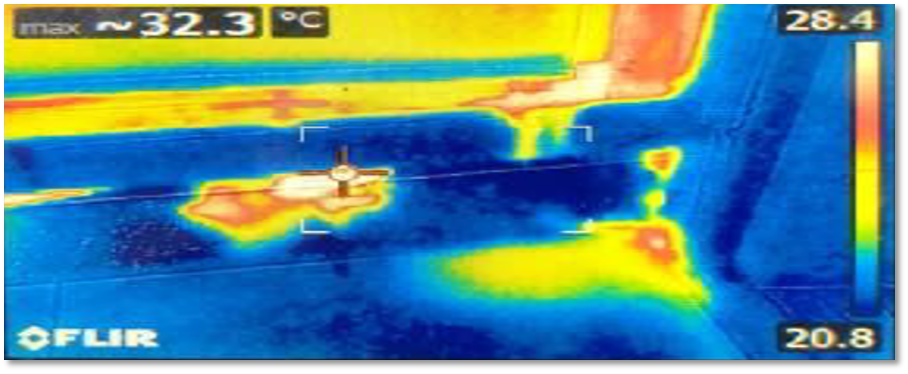
Acoustic profiling
Acoustic profiling uses highly sensitive microphones to identify the noise created by a water leak that many be many feet underground or under buildings. Advanced acoustic software enhances the sound and helps pinpoint its source.
This helps water supply engineers to devise the most effective methods for either repairing the leak or bypassing it.
Tracer gas analysis
Tracer gas analysis works by introducing gas into a water pipe which is buried underground. The gas escapes from the pipe at the point of the leak and rises to the surface, where it is picked up by highly-sensitive gas sensors.
Hydrogen gas, combined safely inert nitrogen is used/. Tracer gas analysis can accurately and quickly locate a leak along a long run of water pipe, even when buried under concrete and asphalt, preventing the need for costly excavation.
Correlation leak detection
Correlation leak detection also uses sound to locate a water leak. Two detectors are placed close to the suspected location of the leak.
They detect the frequency of the sound created by the water leak. By comparing the signal delay, sensor distance and the sound velocity, data from the two detectors can be used to correlate the location of the leak.
Dye leak detection
A simple, non-toxic water soluble dye can be used trace the flow of water through a system. Identifying where the dye is found in the system helps locate leaks.
Inspection cameras
Water supply engineers use a range of digital inspection cameras to record video footage inside pipes to look for signs of damage that indicate a source for a leaks.
The mini camera systems, with a miniature camera on the end of a flexible cable, can also be used to inspect hard-to-reach pipework to identify damage of tell-tale signs of escaping water.
Pipe tracing
Where there are no up-to-date plans showing the location of water supply pipes, they may have to be traced before the location of a leak can be detected.
Two key methods for tracing water pipes passively, without the need for expensive and disruptive excavations, are using a cat and sonde and ground penetrating radar.
Cat and sonde pipe tracing
A sonde is a transmitter which is sent along a pipe from a known point. This is detected by the cat carried on the surface by the clean water technician.
Ground penetrating radar
A ground penetrating radar system detects underground utilities, including water pipes, by transmitting radio waves through the ground. When they hit a water pipe they are bounced back to a receiver, allowing the pipe to be detected.
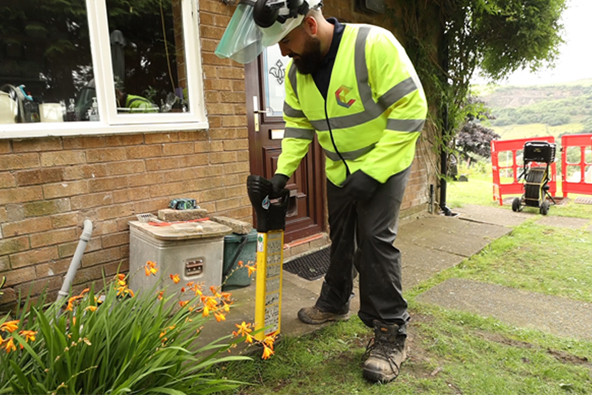

Once a water leak is detected, there are a number of ways repairs can be carried out. In the main, internal leak repairs will be carried out by a plumber. Meanwhile, external water leaks will be repairs by a team of water supply pipe technicians.
A point repair is carried out to repair a leak in one discreet location. It may involve excavating a pipe. A short section of pipe may be replaced or specialist clamps fitted over a damaged pipe to cover the hole causing the leak.
Where a significant section of water pipe needs to be replaced, a common and effective method is to carry out moling. Compressed air is used to force a moling head through the soil. A new water pipe can then be inserted in the underground channel created. This reduces the scale of excavation needed to cure the leak.
If a water pipe is in a hard-to-reach location or it is deemed that the pipe is so degraded that it is at the end of its life, it could be best to reroute the water supply through a new pipe. The pipe can be installed in a way that access points for easy ongoing maintenance can be included.
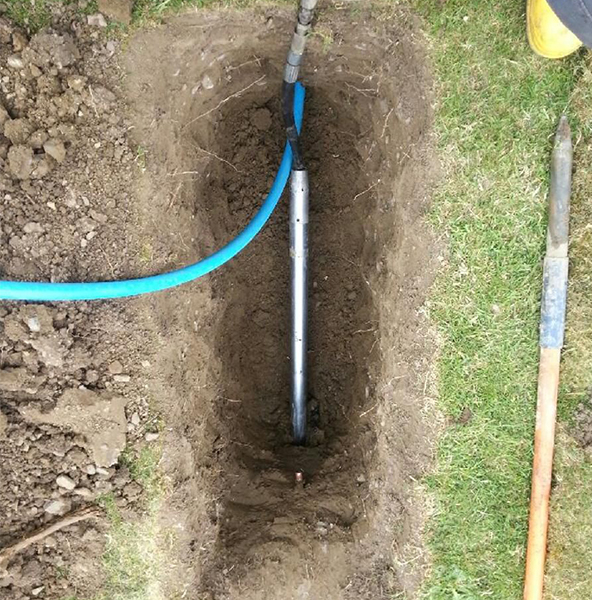
As with water pipe re-routing, where a water pipe has seriously deteriorated or is made of material that is no longer meets regulatory standards, it is likely to be best to replace it.
Assessing the impact of a water leak on a structure is an important first step to taking measures to rehabilitate structures that have been adversely affected.
This is an important part of making an insurance claim following a water leak.
Key elements of the assessment process will be:
Assessing the impact of a water leak on a structure is an important first step to taking measures to rehabilitate structures that have been adversely affected.
This is an important part of making an insurance claim following a water leak.
Key elements of the assessment process will be:
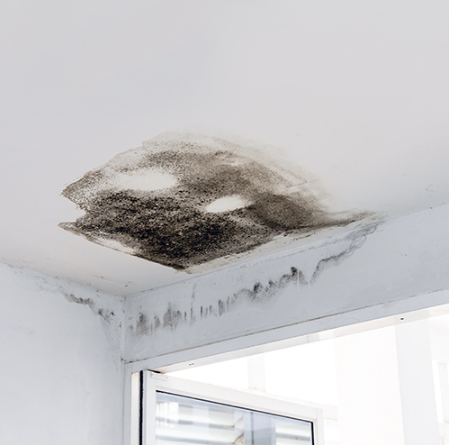
As has been made clear in this guide, the key to identifying wasteful and potentially damaging water leaks is vigilance and knowing what you are looking for.
Water companies are very keen to reduce water waste, so many provide free advice and, in some cases, aids for detecting water leaks, such as toilet leak detection strips.
These are paper strips that change colour when in contact with water, so pick up otherwise hard-to-detect low-volume water flows from cisterns into toilet bowls.
For more information on advice and aids, go to your local water company’s website, or go to the website of Safe Water Save Money, an organisation that works with many water companies to provide free or subsidises water saving devices.
In most cases, it is advisable to seek expert help. For example, internal water leaks associated with appliances and heating systems should be dealt with by a qualified plumber and/or heating engineer.
External leaks should be investigated by a water supply pipe surveying, repair and installation specialist. It will have the expertise and equipment described in this guide to detect leaks and put in place the right solutions.
Catalyst Services UK provides leak detection and water supply pipe repair and replacement services for the insurance industry, plus commercial and domestic customers.
Its other services include: CCTV drainage surveys; drain and sewer cleaning; drain repair and rehabilitation; off-mains drainage maintenance and replacement (septic tanks, water treatment plants); subsidence investigation; and home emergency services.
Helping business and domestic customers every day of the year
December 08, 2025
After the drought – subsidence and surface flooding risks could rise, warn Catalyst experts
The UK’s extremely dry summer could still create elevated risks for property owners well...
November 24, 2025
Catalyst’s Paul Duddle joins expert panel at ILC conference
The expertise and experience of the Catalyst Services UK team will inform a debate...
October 31, 2025
Progress on sewer awareness but behaviour tipping point not yet in reach
However, it also shows we are quite some way still from preventing activity that...